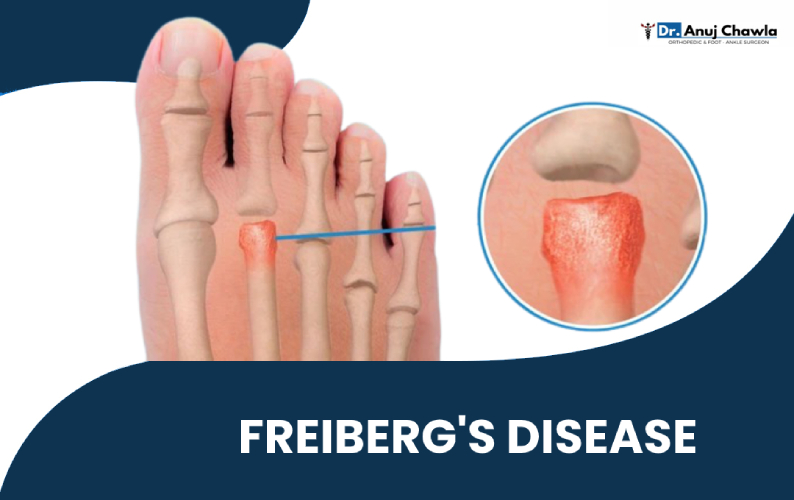- Have any questions?
- +91-9811443717
- info@dranujchawla.com
Know everything about Morton’s Neuroma

Bunion – what to expect from surgery?
October 30, 2020
Winter foot care and pain: Why is foot pain so common in cold weather?
December 1, 2020Know everything about Morton’s Neuroma

Are you experiencing pain in the balls of your toes? Then this may be a sign of Morton’s Neuroma (intermetatarsal neuroma). It is a foot problem which triggers the area between the balls of the foot and metatarsal bones. It is observed when there is an irritation or swelling in the tissues that are located near the nerve leading to the toe. Although it may seem harmless in the initial phase, any negligence can lead to persistent pain and secondary problems.
Let’s dig deeper about this foot problem to know its symptoms and risk factors.
What are the symptoms of Morton’s Neuroma?
The commonest symptom of Morton’s neuroma is pain that is experienced under the balls of the toes, most frequently between third and fourth toe. The pain is sharp, intermittent and burning or stabbing in character and many patients report a typical feeling of walking with a stone/ pebble inside the shoes. Patient may also experience numbness in the adjacent toes due to involvement of the nerves.
Risk factors of Mortons neuroma
The most common factor that is associated withi this problem is wearing an ill-fit pair of shoes. Wearing a shoe with narrow toe box or heel height more than 2 inches put an extreme pressure on the nerves in the foot and hence can increase the chances of developing this condition.
Apoart from that, people with pre-existing foot problems like bunion, flat feet, high arch foot, hammer toes, tight calf muscles etc can also increase the risk of this problem. People who are into sports or profession that need them to run a lot are at a high risk of suffering from this foot problem as constant running puts high pressure on the balls of the foot.
How to diagnose and treat Morton’s neuroma?
Your doctor would first do a detailed clinical examination to look for any predisposing foot condition that increases your chance of this condition. It also includes checking for palpable lump, callus or painful clicking between the ball of the toes. Further investigation in the form of X-ray, Ultrasond or MRI is warranted to comfirm the diagnosis.
Once the diagnosis is confirmed, the treatment depends on the severity of the symptoms. For mild and early cases, a conservative/ non-operative modality like stretching exercises, massage, ice packs, medicine and insole modification is done. If the condition does not improve with these modalities, more invasive measures like ultrasound guided steroid injection in the nerve is advocated. Finally for severe cases or in whom symptoms recur, a small surgery to remove the nerve is performed.
Right shoes – the ultimate solution to prevent a recurrence
This condition tends to recur if the right care is not given to the feet and the best way to avoid this situation is by wearing the right shoes. The following is the guide for shoes that prevent this foot problem:
- Avoid tight and high-heeled footwear as much as possible.
- Wear padded socks for protecting feet while walking or standing.
- If your profession demands standing for a long duration, then try custom made insoles with metatarsal pads or Mortons extension in the area of pain.
- Activity modification to avoid factors that trigger foot pain like running or prolonged standing
- While indulging in any kind of heavy physical activity professionally, one should wear padded footwear.
If you want to prevent the occurrence of any foot problem, then it is better to perform some foot exercises to stretch your foot joints and strengthen your foot muscles and bones. If you are looking for an experienced foot and ankle specialist in Gurgaon, then book an appointment with Dr. Anuj Chawla. He will try his best to help you in getting rid of any type of foot pain.

